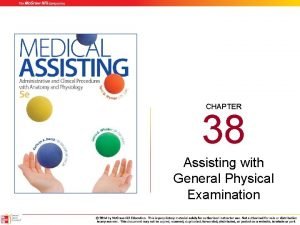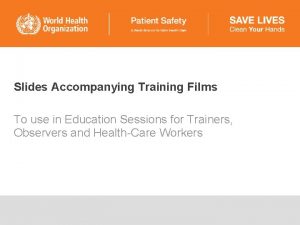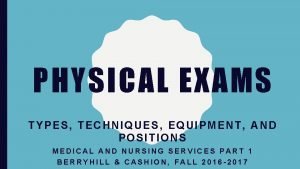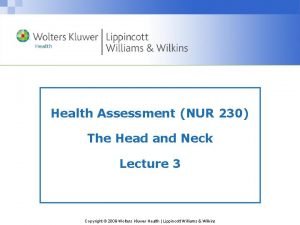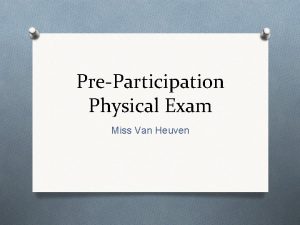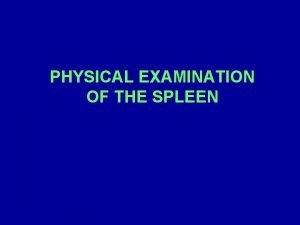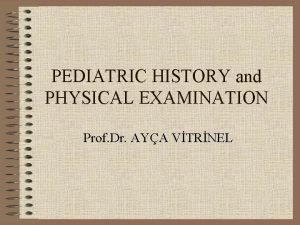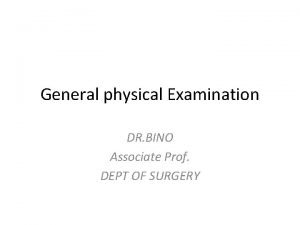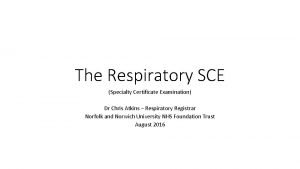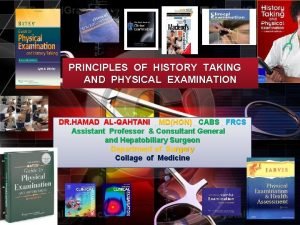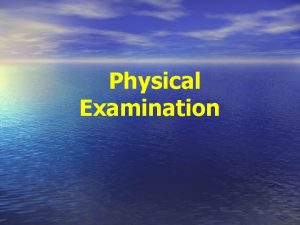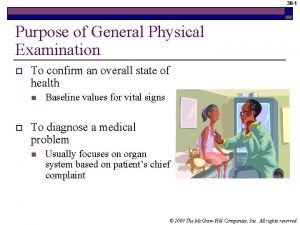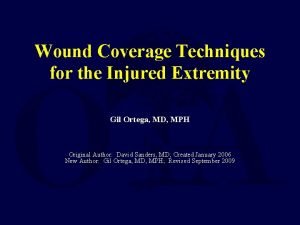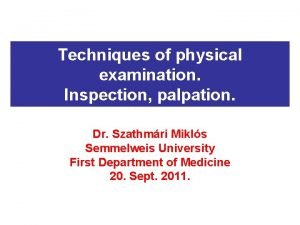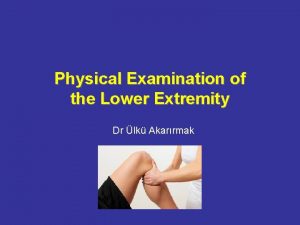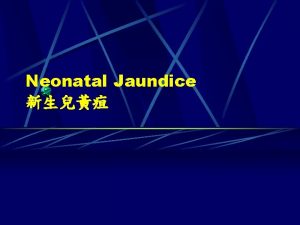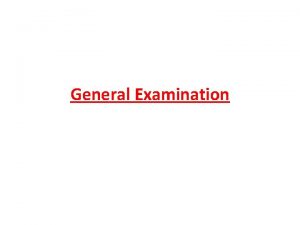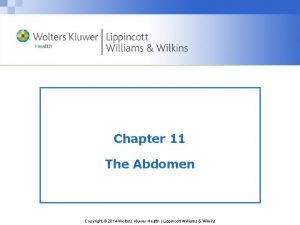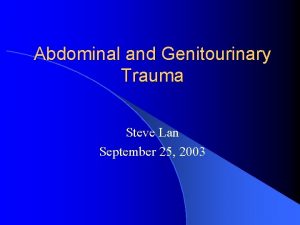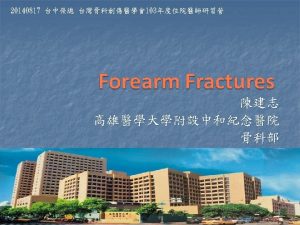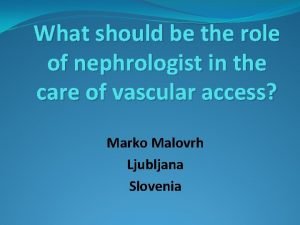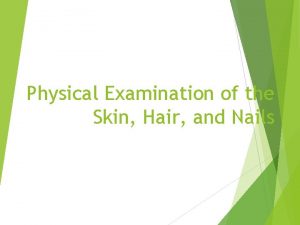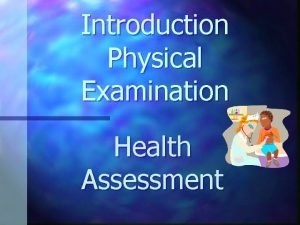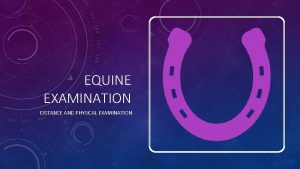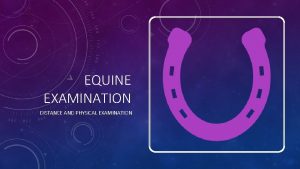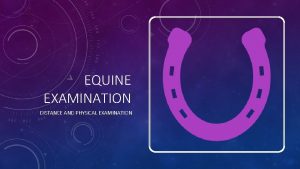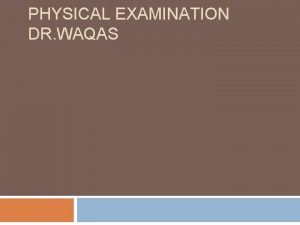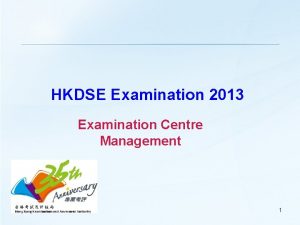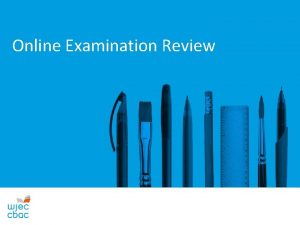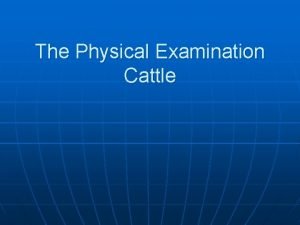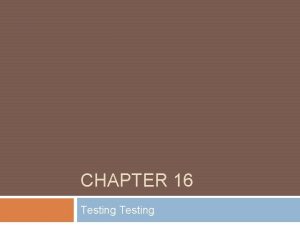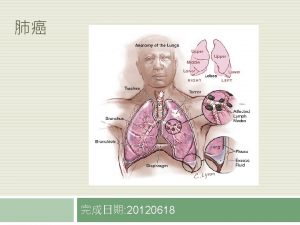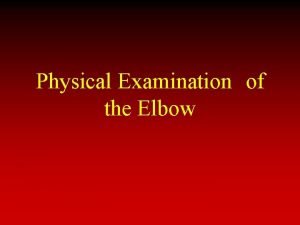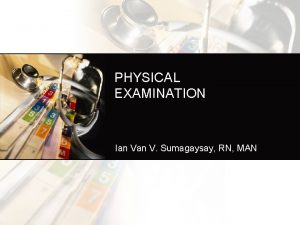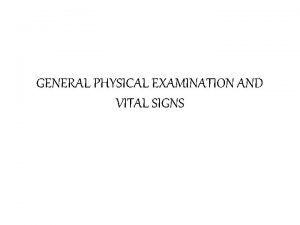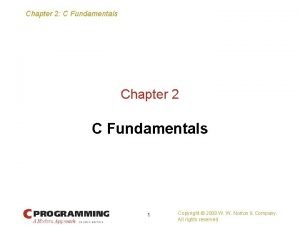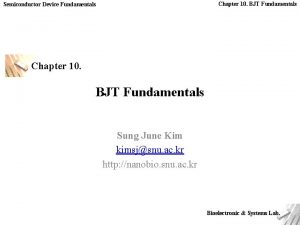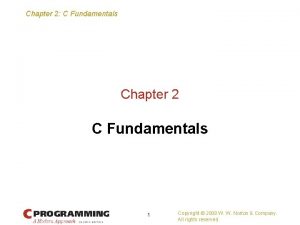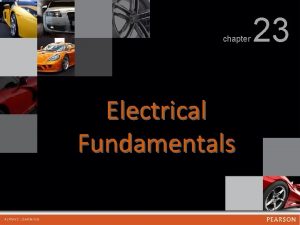Fundamentals of Physical Examination Chapter 5 Physical Examination

























- Slides: 25

Fundamentals of Physical Examination Chapter 5

Physical Examination • • Inspection Palpation Percussion Auscultation

Physical Exam • Determine the correct diagnosis • Proficiency is attained through practice • Typical format for recording the exam includes: – Initial impression – Vital signs – HEENT – Neck – Thorax – Abdomen – Extremities

Head • • Facial expression Nasal flaring Cyanosis Pursed lip breathing

Eyes • • • Pupillary reflexes – PERRLA Mydriasis Miosis Ptosis Diplopia Nystagmus

Neck • • • JVP Accessory muscle use Tracheal position Lymph nodes Carotid pulse

Lung Topography Anterior Chest Posterior Chest

Lung Topography Lateral Chest

Thoracic Cage Landmarks Anterior Chest Posterior Chest

Lung Fissures

Thoracic Inspection • Thoracic configuration • Breathing patterns • Central cyanosis • Breathing Effort – – – Pectus carinatum Pectus excavatum Kyphosis Scoliosis Kyphoscoliosis Flail chest – – – Apnea Biots Cheyne stokes Kussmauls Apneustic Paradoxical Asthmatic Retractions/bulging Abdominal paradox Respiratory alterans Hoover’s sign




Thoracic Palpation • • Vocal fremitus Tactile fremitus Thoracic expansion Skin and subcutaneous tissues


Thoracic Percussion • Indirect percussion • Lung fields – Normal resonance – Increased resonance – Decreased resonance • Diaphragmatic Excursion

Lung Auscultation • • • Tracheal breath sound Bronchovesicular Vesicular Bronchial Adventitious – Wheeze – Crackles – Rhonchi – Stridor – Pleural friction rub

Figure 05 -19 Location on chest wall where normal bronchovesicular and vesicular breath sounds are heard. A, Anterior bronchovesicular. B, Posterior bronchovesicular. C, Anterior vesicular. D, Posterior vesicular. (From Wilkins RL, Hodgkin JE, Lopez B: Fundamentals of lung and heart sounds, ed 3, St Louis, 2004, Mosby. )

Wheezing vs Crackles

Voice Sounds • Brochophony • Egophony • Whispering pectoriloquy

Precordium • Heart topography • Point of maximal impulse – PMI • Heart sounds

Neurologic Exam • Suspected brain or spinal cord injury • Assessment of LOC • Brainstem

Abdomen • Hepatomegaly • Ascites

Extremities • • • Clubbing Cyanosis Pedal edema Capillary refill Peripheral skin temperature
 General physical exam
General physical exam Physical examination tray
Physical examination tray Types of physical exams
Types of physical exams Nutrition focused physical exam training
Nutrition focused physical exam training Nutrition focused physical findings
Nutrition focused physical findings Bates guide to physical examination
Bates guide to physical examination Office-based pre-participation physical examination
Office-based pre-participation physical examination Mufti sign spleen
Mufti sign spleen Integumentary assessment
Integumentary assessment Prof dr ayça vitrinel
Prof dr ayça vitrinel Obrunded
Obrunded Sce respiratory
Sce respiratory Principle of history taking
Principle of history taking Tactile fremitus test
Tactile fremitus test General physical examination
General physical examination Mathes nahai
Mathes nahai Physical examination techniques
Physical examination techniques Myotomes ll
Myotomes ll Differential diagnosis of jaundice in pediatrics
Differential diagnosis of jaundice in pediatrics Pulastion
Pulastion Wolters kluwer
Wolters kluwer Principles of physical examination
Principles of physical examination Principles of physical examination
Principles of physical examination Conclusion of physical examination
Conclusion of physical examination Bulla skin
Bulla skin Physical examination introduction
Physical examination introduction
